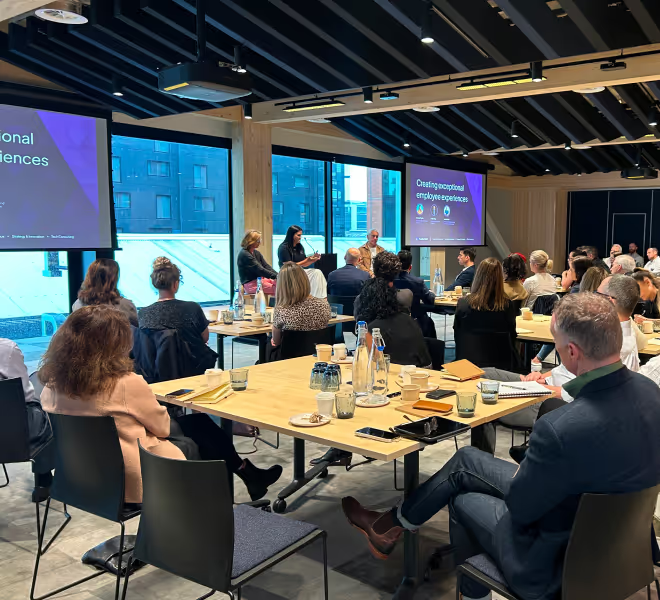Historically we’ve always been cautious when we’re approached to run focus groups, rather than being given the chance to design the research based on specific objectives and the domain being investigated.
The reason for this stems from our observation that often when we dig into the purpose of the research, we realise that focus groups (AKA multi-participant customer feedback workshops) aren’t the most appropriate research method and we will end up conducting one-on-one in-depth interviews. However, over the last few months, we’ve had the opportunity to run multi-participant workshops for some slightly different contexts and it’s reminded (and surprised) us how useful they can be.
Why have we historically favoured one-on-one sessions?
During one-on-one sessions, we find that participant’s personal reflections are more authentic, insightful, and encompass a broader view of the experience, including other tools, people, products and services that might be relevant to the research. We put this down to the one-on-one format making it easier for the facilitator to build trust with a participant and really tease out the reasons behind their feelings and behaviours, leading to higher quality insights.
What are the benefits of running multi-participant customer feedback workshops?
The obvious advantage of multi-participant workshops is that you get to speak to more people in a shorter time frame, but there are other benefits too. Group workshops can give you more freedom to be creative with the types of activities you set participants, from co-design of digital experiences, card sorts for feature prioritisation, or crash-testing physical experiences using VR or interactive 3D models.
Remember, not all the activities conducted during multi-participant workshops need to be group activities.
You can ask participants to complete “individual work” which can be reviewed by the group or facilitators post-workshop. This is especially useful if you’re asking participants to rank features or provide commentary on something that you either don’t have time to cover as a group or may be too sensitive for group discussion.
In our opinion, the main benefit and reason for conducting multi-participant workshops are the synergies that come from having a group of people share, listen, challenge and build upon the thoughts and ideas of others.
What types of research objectives suit multi-participant workshops?
More importantly, we should be asking what types of research don’t suit multi-participant workshops.
In our experience, user testing of digital experiences doesn’t suit this format as you need to observe how an individual would interact with the experience on their own without having their response influenced, or led, by others. Obviously, if the digital experience is a shared one then yes, multi-participant workshops could be an appropriate option, but by-and-large, user testing should remain in the realm of traditional one-on-one sessions. Other contexts that aren’t well suited include those that require participants to share confidential personal or business information, such as sharing personal financial information or experiences with government agencies. This type of research is likely to lead to participants shutting down, or worse, providing misleading information. As researchers, we have a duty of care over our participants and we need to be respectful of what information we expect them to share with other participants.
Where we have had great success in conducting multi-participant workshops is in exploring architectural concepts using a mixture of VR and 3D models as stimulus. When dealing with the conceptual design of physical spaces — where much is left to the imagination — there can be advantages in a group decoding the experience versus an individual. Now, once again, one must be careful. Your specific research objectives must be considered; for instance, if you want general feedback on a building or experience then group sessions can be very effective, but if you want to test the validity of a wayfinding system designed to be interpreted at the individual level then VR one-on-one sessions are the way to go.
A well-facilitated multi-participant session is not just about hearing the customer’s voice; some of the most valuable group sessions we have run have been with internal stakeholders and operational staff. The trick here is to conduct these sessions with the same level of rigour so the session is structured and facilitated, rather than a free-for-all which can end up being like any other internal “meeting”.
What do you need to look out for?
Be clear about your research objectives and design accordingly — don’t force something that doesn’t feel natural, and don’t fall into the trap of assuming that getting input from a larger group of participants will provide more value than the in-depth single point of view you’d get from talking to an individual participant.
Being prepared is probably the single most important aspect of facilitating a group discussion. You need to be practised, have well-choreographed stimulus, and be prepared to actively manage the group ensuring that each participant has their fair share of the limelight.
In addition, the role of the facilitator is critical — group facilitation can be taxing, so ensure you have the right person for the job PLUS the right on-site backup. We make sure we have two facilitators: one facilitating the main group, and one in support ensuring the tech is working and managing inbound questions from observing clients. It’s also important to have a subject matter expert in the room so any detailed questions that participants ask can be readily responded to.
In summary
So we’re back in love with multi-participant workshops — but as the saying goes, there is a time and a place for everything. The most important thing to remember is to adopt a research format that best fits the research objectives, and if you happen to land on a multi-participant format, do the prep, practice, and build interactivity into your workshop to keep participants engaged.






